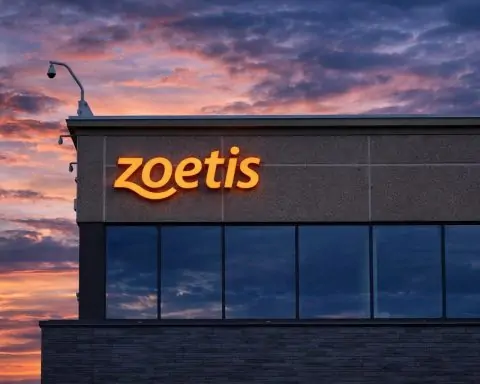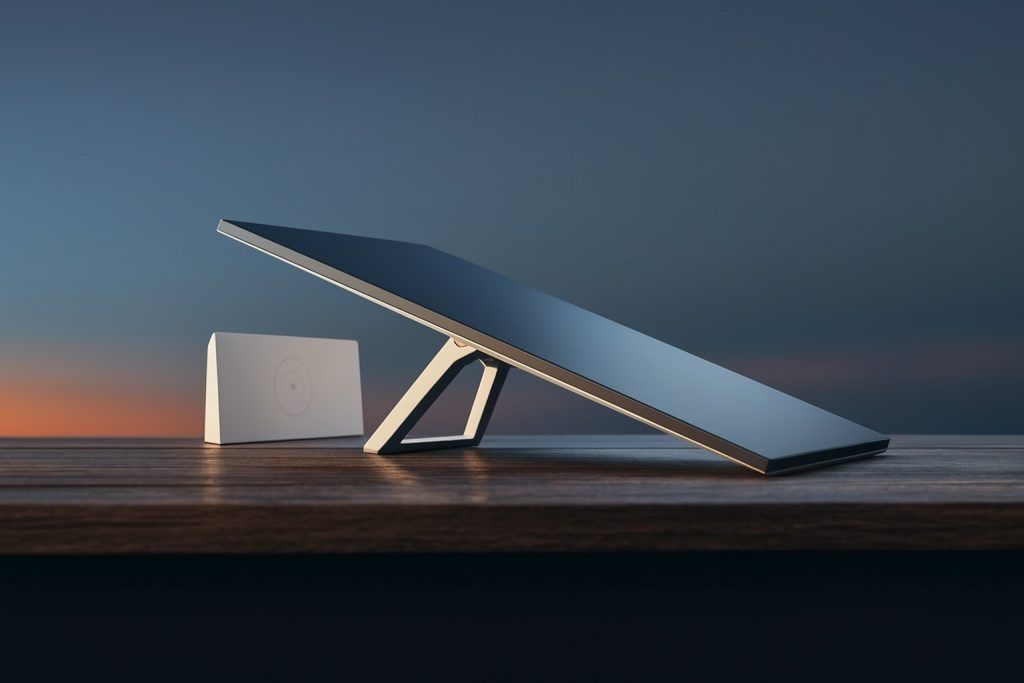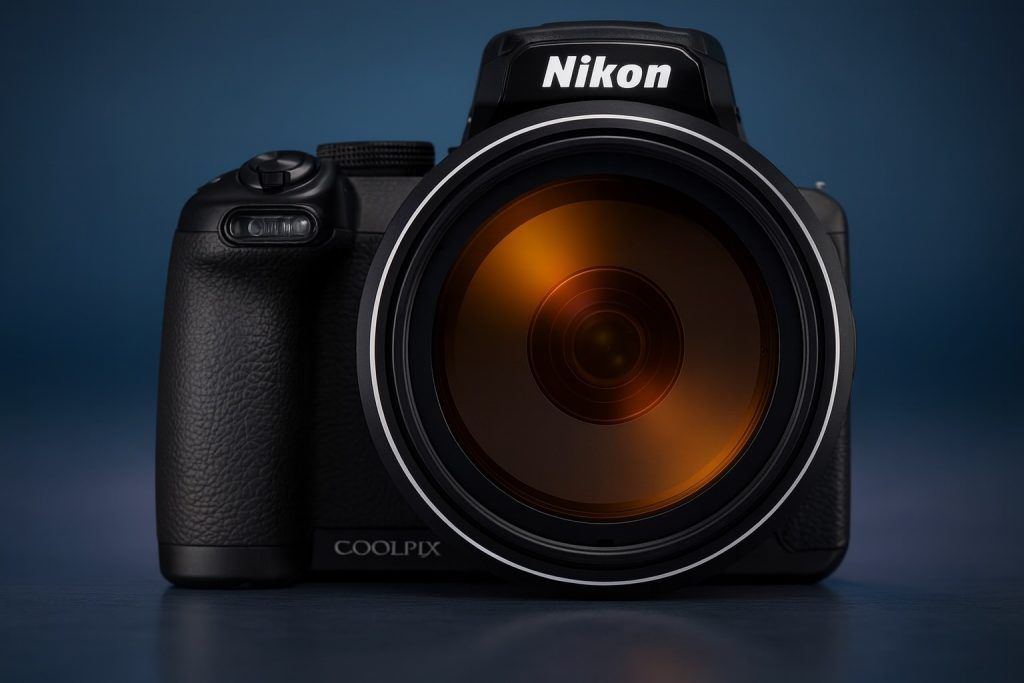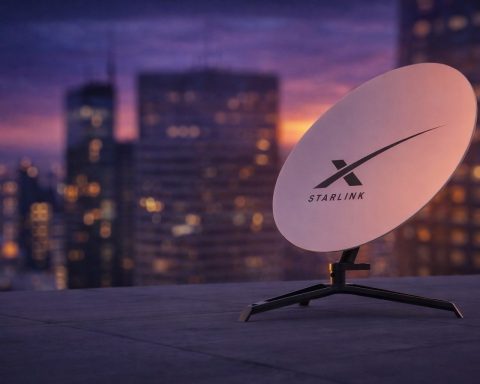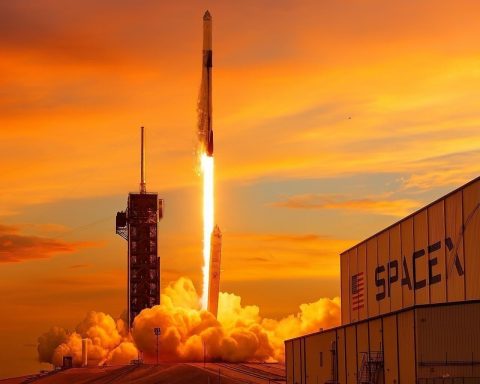- Starlink Standard Kit includes a 23.4″ x 15.1″ motorized dish (~6.4 lb) with IP67 weather sealing, a 49 ft cable to a Wi‑Fi 6 router, and delivers up to about 220 Mbps down with 20–50 ms latency on Roam plans, priced around $599 for the kit and $150/mo unlimited Roam or $50/mo Roam 50GB.
- Starlink Mini is an all‑in‑one unit about 11.75″ x 10.2″ x 1.45″, weighing ~2.5 lb, with 12–48V DC input, 110° field of view, manual pointing, built‑in Wi‑Fi 5, ~1,200 sq ft coverage, and speeds over 100 Mbps with ~20–30 ms latency, priced at $599 with Roam options of $50/mo for 50 GB or $150/mo unlimited.
- Starlink Roam enables portable use of the Standard kit for RVs or boats, and SpaceX officially supports moving use on Roam plans as of 2023.
- Starlink has over 3 million users in 100+ countries, illustrating its global reach as a mature consumer service.
- Amazon Kuiper Standard Terminal is a flat outdoor unit around 11″ x 11″ x 1″, under 5 lbs, with a Ka‑band phased‑array and up to ~400 Mbps throughput, designed to connect to an indoor router or Eero mesh.
- The Ultra‑Compact Kuiper Terminal is about 7″ square and ~1 lb, portable, with up to ~100 Mbps, and is expected to be priced well under $400.
- The High‑Bandwidth Kuiper Terminal is a large ~19″ x 30″ dish designed for up to ~1 Gbps throughput, intended for enterprise/government use and permanent installation.
- Amazon’s Kuiper program began with prototype KuiperSat‑1 and ‑2 in late 2023, launched 27 operational satellites in April 2025 on Atlas V, with beta service planned by late 2025 and a FCC rule to deploy at least 1,618 satellites by mid‑2026, aiming for global coverage by 2028 with 3,236 satellites.
- Kuiper hardware targets sub‑$400 production cost for the standard terminal, service pricing is TBD, with analysts speculating about roughly $99–$120 per month and potential Prime/Eero integrations and AWS edge capabilities.
- Starlink experienced a global outage on July 24, 2025, underscoring reliability considerations for satellite broadband and ground infrastructure dependencies.
Satellite internet technology is rapidly evolving beyond fixed home installations to portable, on-the-go broadband solutions. SpaceX’s Starlink service – which already serves over 3 million users across 100+ countries [1] – has introduced new hardware for travelers and remote users, while Amazon’s Project Kuiper is preparing its own user terminals. This report provides an in-depth comparison of SpaceX’s “Starlink Portable WiFi” solutions (including the standard Starlink kit with Roam service and the new Starlink Mini) and Amazon’s Project Kuiper customer terminals, focusing on current models, technical specs, performance, portability, setup, pricing, availability, and intended use cases. We also examine reliability, power usage, device integration (routers, batteries, solar), and upcoming developments from Starlink, Kuiper, and other competitors like OneWeb, AST SpaceMobile, and Telesat.
Starlink’s Portable Solutions Overview
Starlink Standard Kit (Portable “Roam” Use): The standard Starlink residential kit consists of a dish antenna and a separate Wi-Fi router unit, originally designed for stationary home use. However, SpaceX now offers Starlink Roam plans that let customers use the standard kit portably – for example, at an off-grid cabin or in an RV [2]. The standard dish (a flat rectangular phased-array antenna) measures about 23.4 x 15.1 inches (594 x 383 mm) and weighs ~6.4 lbs (2.9 kg) without its stand [3] [4]. It can automatically orient itself for optimal satellite link (with internal motors for tilt) and is built to handle harsh weather (IP67 rated, snow melt up to 1.5″/hour) [5]. The dish connects via a 49 ft (15 m) cable to the included Starlink router (Wi-Fi 6, tri-band) which provides up to 3,200 sq.ft. of coverage and has Ethernet ports for wired devices [6]. This standard setup draws about 75–100 W on average [7], requiring AC power (100–240 V). In portable use, that usually means running off a generator, vehicle inverter, or large battery. Max throughput on Starlink Standard is advertised around 220 Mbps or higher under good conditions (many users report 50–200 Mbps typical) [8] [9], with uploads up to ~20–40 Mbps and latency ~20–50 ms in clear skies. It’s suited for data-intensive tasks like streaming, video calls, and even online gaming [10] [11]. SpaceX sells the standard kit for around $599 (sometimes discounted in promotions) and offers Roam plans at $150/mo for unlimited regional use or a $50/mo “Roam 50GB” plan for lighter use [12]. Importantly, Starlink Standard can be paused when not needed, making it flexible for sporadic travel [13] [14].
Starlink Mini: In mid-2024, SpaceX debuted Starlink Mini, a compact all-in-one portable kit designed specifically for travelers and mobile users [15]. The Mini integrates the antenna and Wi-Fi router into a single weatherproof unit about the size of a laptop [16]. It’s significantly smaller and lighter than the standard dish – roughly 11.75″ x 10.2″ (30 x 26 cm) and just 1.45″ (3.7 cm) thick, weighing only ~2.5 lbs (1.1 kg) with its small kickstand [17] [18]. This makes it truly backpack-portable. The antenna is an electronically steered phased array with a 110° field of view, but unlike the standard dish, the Mini requires manual pointing (the user roughly aims it at the sky – there is no auto-motor) [19] [20]. Once powered, it self-initializes in minutes. The integrated router supports dual-band Wi-Fi 5 (3×3 MU-MIMO), covering ~1,200 sq.ft. and up to 128 devices [21] [22]. The Mini is designed for lower power consumption, averaging 25–40 W [23]. Notably, it can run directly from DC power: it accepts 12–48V input and even supports USB-PD (100W at 20V) via an accessory cable [24]. This means you can plug Starlink Mini into a portable battery pack or solar generator – truly off-grid. In fact, SpaceX notes you could get “anywhere from an hour of usage on a small power bank to a few days on a solar generator” powering the Mini [25]. Third-party battery packs (like the PeakDo LinkPower 1) have also emerged, clipping onto the Mini to provide ~4.5 hours of internet per charge [26] [27]. The Mini’s throughput is a bit lower than the standard dish – over 100 Mbps download under ideal conditions, with users seeing ~50–150 Mbps and latency ~20–30 ms in tests [28] [29]. This is still fast enough for HD streaming and work tasks, but heavy users may notice the cap. SpaceX initially offered Starlink Mini hardware at $599 (about $100 more than the standard kit) [30]. Service can be activated either on a “Mini Roam” plan – $50/mo for 50 GB of portable data (with the option to buy more data per GB) – or on the regular Roam Unlimited $150 plan if more data is needed [31]. (As of mid-2024, residential subscribers could also add a Mini to their account for a $30/mo add-on [32], but Starlink later opened Mini sales to anyone with standalone plans [33].) Elon Musk has touted Starlink Mini as a game-changer, suggesting it could be a great “low-cost option for a good backup internet connection if your landline goes out” [34] in addition to serving nomads and campers.
Use Cases: Both Starlink Standard and Mini can be used stationary or in-motion. Starlink now officially supports usage while moving (e.g. on an RV or boat) for all Roam plans [35], which was a big update in 2023. The Standard dish is a bit cumbersome for true mobility (it’s larger, requires AC power, and isn’t aerodynamically flat), but it works well for RVers or setting up camp in remote sites. The Mini, by contrast, is tailored to “work and play at remote locations” [36] – ideal for vanlife travelers, overlanders, backpackers, or anyone who needs internet in a small package. Its lower profile and DC power input make it easier to use on a moving vehicle (some users simply prop it on a car dashboard or roof; it even works through glass in a windshield) [37]. The trade-off is that the Mini is recommended for more “basic internet applications” [38] – great for email, browsing, video calls, and streaming, but not intended to deliver the higher speeds or heavy data use that the larger dish can handle. In essence, Starlink Standard remains the workhorse for home or semi-permanent use (with the option to travel), whereas Starlink Mini emphasizes portability and convenience over raw performance.
Amazon’s Project Kuiper Terminals
Amazon’s Project Kuiper is a forthcoming low-Earth orbit satellite internet constellation aiming to rival Starlink. While Kuiper’s full service isn’t live yet (first prototype satellites launched late 2023, and the first 27 operational satellites launched in April 2025 [39] [40]), Amazon has revealed a lineup of user terminal designs and is expected to begin pilot customer service by late 2025 [41]. Project Kuiper’s customer terminals will come in three sizes to address different needs [42] [43]:
- Standard Kuiper Terminal: A residential/small business terminal that’s <11 inches square and ~1 inch thick, weighing under 5 lbs [44]. This flat, pizza-box-sized antenna is an electronic phased array (like Starlink’s) and is designed to deliver up to ~400 Mbps of throughput [45]. Despite its compact footprint, Amazon says it “will be one of the most powerful commercially available customer terminals of its size” [46]. Amazon engineers achieved a production cost under $400 for this device [47], meaning it may be sold around that price point (potentially subsidized lower for customers) [48] [49]. The standard terminal is expected to be the workhorse for typical home users, analogous to Starlink’s standard dish [50] – but notably it’s much smaller (11″ x 11″ vs Starlink’s 23″ x 15″) [51]. It will likely mount on an outdoor surface (e.g. roof or wall) and connect to an indoor Wi-Fi router or modem. Amazon has not yet detailed the indoor unit – it could integrate with their eero mesh routers for in-home Wi-Fi, leveraging Amazon’s home networking ecosystem [52] [53] (industry analysts consider that a logical possibility, though not confirmed). The standard terminal’s power consumption hasn’t been published, but given its high performance, one can expect it to require a power source similar to Starlink’s (possibly on the order of tens of watts). Like Starlink, it will use Amazon’s ground gateways and fiber backhaul to reach the internet, with Kuiper satellites using optical laser links to route data globally [54] [55]. Amazon plans to manufacture these in high volume, aiming to ship tens of millions of units eventually [56] [57].
- Ultra-Compact Kuiper Terminal: An even smaller, portable terminal only ~7 inches square, weighing about 1 pound [58]. This “ultra-compact” Kuiper antenna will offer up to ~100 Mbps speeds [59]. Its portability and affordability are intended to connect customers who need a lower-cost option or on-the-go connectivity – Amazon mentions use cases like “government and enterprise customers pursuing applications like ground mobility and IoT” [60]. In other words, this could be used for vehicles, portable deployments, or smart devices in the field. At 7″ x 7″, it’s actually smaller than Starlink Mini (which is ~11 x 10 inches) [61]. This Kuiper Mini-terminal might be a direct competitor to Starlink Mini for mobile users, albeit with a likely lower bandwidth cap (100 Mbps). It’s expected to be Amazon’s most affordable terminal as well [62] – potentially well under $400 given its reduced size and capability. This device could be battery-powered or used in remote sensors, etc., though detailed specs (like power draw or included Wi-Fi capability) have not been disclosed yet. It will likely require line-of-sight to the sky and could be mounted similarly to a portable satellite flat panel. Amazon’s goal here is to reach even more users by lowering costs and entry barriers, bridging the digital divide with a truly accessible unit.
- High-Bandwidth Kuiper Terminal: A large, enterprise-grade antenna about 19″ x 30″ in size [63]. This big terminal is designed for demanding needs – Amazon says it will deliver speeds up to 1 Gbps [64]. Its target users are enterprise, government, and telecom applications where high throughput is needed (for example, providing a connection to a remote office, cellular backhaul, or community Wi-Fi). This is analogous to Starlink’s High-Performance dish (the flat, bigger Starlink variant for business/RV use), though Kuiper’s is even larger (30″ long vs Starlink HP ~24″) [65]. The large Kuiper terminal will be heavier and more expensive; it’s not meant to be portable at all, but rather permanently installed. It will require substantial power and likely professional installation. For completeness, it shows Amazon’s range: from 7″ to 30″ devices to cover everything from IoT to broadband to backhaul.
Status and Availability: Amazon’s first two prototype Kuiper satellites (KuiperSat-1 and -2) were launched in late 2023 to test the system [66]. After that, Amazon began mass production of satellites and in April 2025 launched the first batch of 27 operational Kuiper satellites on an Atlas V rocket [67]. The company aims to start beta service by end of 2025 in select regions (likely higher latitudes first) and must deploy at least 1,618 satellites by mid-2026 per FCC conditions [68] [69]. Amazon stated it expects to “begin delivering service to customers later [2025]” pending successful deployment [70]. Early service might cover parts of the northern US and other higher-latitude areas once ~578 satellites are up (as Amazon noted in filings) [71]. Pricing for Kuiper service is still TBD – Amazon has not announced monthly fees as of mid-2025 [72]. However, they have signaled a “fast, affordable broadband” mission [73] and know they must stay competitive with Starlink. Analysts speculate Amazon could price Kuiper around or below Starlink (Starlink’s residential plans in the US range ~$80–120/mo [74]). One report projected ~$99–$120 per month for standard service, but with the possibility Amazon will undercut competitors or bundle with Amazon Prime for added value [75] [76]. Indeed, Amazon could “potentially bundle satellite internet service as part of Prime or offer it at a discount to Prime members,” according to industry analysts [77] – leveraging its 180 million Prime subscriber base [78]. On hardware, Amazon’s stated goal is sub-$400 terminals [79], which would be cheaper than Starlink’s $599 kits. If Amazon achieves economies of scale (applying its experience in mass-producing devices like Echo and Fire TV [80]), customers might even see little to no upfront cost with contract commitments (there have been hints of aggressive strategies – e.g., Starlink itself briefly offered free hardware with contracts in some markets [81]).
Technology and Integration: All Kuiper terminals will use Ka-band phased-array antennas to communicate with Kuiper’s LEO satellites [82]. Amazon developed a custom baseband chip (“Prometheus”) that powers both the satellites and user terminals, packing a lot of processing power into a small chip to handle 5G-like waveforms and thousands of simultaneous connections [83] [84]. This is expected to make the network efficient and capable. Amazon also touts that its satellites will use optical inter-satellite links (lasers) from day one to create a global mesh network [85] [86], potentially reducing latency and routing traffic optimally (Starlink is also adding lasers, but Amazon suggests its first-wave satellites are all laser-equipped). For home users, Amazon could integrate Kuiper nicely with its existing products: as noted, pairing the terminal with an Eero mesh Wi-Fi router would “simplify in-home connectivity” [87]. Also, Amazon’s vast AWS cloud infrastructure might be leveraged to enhance service – e.g. edge computing or dynamic network management – in ways that could differentiate Kuiper for enterprise customers [88]. While those are future possibilities, it’s clear Amazon is aiming for quality, reliability, and value. Rajeev Badyal, Amazon’s VP of technology for Kuiper, stated that from day one they focused on delivering “the best experience for different customers around the world,” emphasizing quality, reliability, and value [89]. In short, Amazon is preparing a full-court press: multiple hardware options, likely competitive pricing, and integration into the Amazon ecosystem, to compete head-on with Starlink.
Side-by-Side Comparison Table
Below is a feature-by-feature comparison of SpaceX Starlink’s portable offerings (Standard kit vs. Mini) and Amazon’s Project Kuiper standard terminal, summarizing hardware specs, performance, and service details:
| Feature | Starlink Standard Kit (Portable “Roam”) | Starlink Mini | Amazon Kuiper Standard Terminal |
|---|---|---|---|
| Device Type & Included Hardware | Dish + separate router: 23.4″ x 15.1″ phased-array dish (motorized auto-align) + indoor Wi-Fi6 router (AC power supply) [90] [91]. Designed for home use but can be used portably with Roam plan. | All-in-one compact unit: 11.75″ x 10.2″ x 1.45″ phased-array dish with built-in Wi-Fi5 router, in a single IP67 weatherproof device [92] [93]. Includes a small kickstand and DC power cable. | Flat panel antenna + indoor unit: ~11″ x 11″ x 1″ phased-array antenna (outdoor unit) [94]. Connects to indoor networking gear (likely via PoE cable). Wi-Fi router integration not yet confirmed (may use Amazon Eero mesh) [95]. |
| Weight | Dish ~6.4 lbs (2.9 kg) without stand [96]; ~7 lbs (3.2 kg) with stand. Router ~1.25 lbs. Total kit ~8–9 lbs. | ~2.4 lbs (1.1 kg) for the device alone; ~2.56 lbs (1.16 kg) with kickstand [97]. Ultra-lightweight – ~60% lighter than standard dish [98]. | < 5 lbs (2.2 kg) for outdoor unit [99]. Very lightweight for a high-performance terminal. (Kuiper also has a 1 lb ultra-compact model, and a larger 19 × 30″ model of unspecified weight.) |
| Antenna & Orientation | Electronic phased array; ~110° sky FoV [100]. Motorized tilt for auto-pointing; just needs roughly upright view of sky. Self-heating for snow/ice melt (up to 40 mm/hr) [101]. Rated to 60+ mph winds [102]. | Electronic phased array; 110° FoV [103]. No motor – manual aim (software-assisted alignment via Starlink app). Built-in heater (melts ~25 mm snow/hr) [104]. Operational in 60 mph winds [105]. Extremely portable form-factor (fits in backpack). | Electronic phased array (Ka-band). Likely ~100°+ FoV. Motorization TBD: likely fixed installation (manual aim during install). Designed for outdoor mounting. Weather-hardened (exact specs TBD, but expected to handle various climates). |
| Performance (Download / Upload) | Typical 50–200 Mbps down, 10–30 Mbps up for residential users (capacity varies) [106]. Under ideal low-use conditions, can exceed 200 Mbps (reported up to ~220 Mbps) [107] [108]. Unlimited data (deprioritization after high use in congested areas may occur). | 100 Mbps+ down (max “over 100 Mbps” by spec) [109], ~5–20 Mbps up (varies). Real-world tests see ~50–150 Mbps down, similar latency to standard (20–40 ms) [110] [111]. 50 GB high-speed data cap on Mini Roam (then buy more or slow down) [112]. Best for moderate internet use. | Up to 400 Mbps down (standard model) [113], upload not stated (likely tens of Mbps). Aims to rival fiber speeds. Low latency (~<50 ms expected) similar to Starlink [114]. Data caps unknown (possibly none or generous). Larger enterprise model will offer ~1 Gbps down [115]. |
| Latency | ~20–50 ms typical (LEO satellite hops + ground routing) – much lower than legacy GEO satellites [116]. Good for video calls, gaming. | ~20–50 ms typical, same network as standard Starlink. No added latency from hardware. Excellent for real-time applications. | ~<50 ms expected, since Kuiper also uses LEO orbits and laser crosslinks [117]. Comparable to Starlink’s latency, dependent on ground network routing. |
| Power Requirements | ~75–100 W average consumption [118] (can spike higher under heavy load). 100–240 V AC input via included PoE power supply [119]. Off-grid use requires inverter or AC generator (some RVers use dedicated 12V Starlink kits or aftermarket DC-DC converters). | ~25–40 W average draw [120] (much more power-efficient). 12–48 V DC input; supports USB-C Power Delivery (100 W) for direct battery/solar use [121]. Can run ~4.5 hours on a 99 Wh battery [122], or indefinitely on vehicle 12V/solar with proper converter [123] [124]. Truly designed for off-grid portability. | Not officially released, but target cost implies efficient design. Likely ~<50 W average for standard terminal (given size/power tradeoffs). Will use AC mains via an indoor adapter (possibly PoE injector). Enterprise 1 Gbps unit will consume more power. (Power over Ethernet or direct AC likely, depending on install.) |
| Wi-Fi / Networking | Separate indoor router: Starlink Gen3 router (802.11ax Wi-Fi 6, tri-band, up to 3,200 sq.ft coverage) with 2 Ethernet ports [125]. Can use Starlink’s Mesh nodes or set to Bridge Mode for third-party routers. | Integrated Wi-Fi router: 802.11ac Wi-Fi 5 dual-band (3×3 MIMO) [126]. Covers ~1,200 sq.ft and 128 devices [127]. Has 1 Ethernet LAN port (weather-sealed “Starlink plug”) for wired device or external router. (Not compatible with 3rd-party mesh systems in default mode) [128] [129]. | Likely separate router: Not yet detailed. Amazon could bundle an eero mesh Wi-Fi router for in-home use [130]. The outdoor unit probably connects via one cable (PoE) to an indoor Wi-Fi router or gateway. Expect support for standard networking (Ethernet out to any router). |
| Installation & Setup | Simple setup: Mount dish outside with clear sky view (comes with basic tripod stand). Plug dish cable into router, router into power – it auto orients and connects within minutes [131]. Use Starlink app to check for obstructions and manage settings. Portable use: pick up and relocate as needed; Roam plan allows use in any “live” cell (over 100 countries) [132]. | Ultra-simple: Place the flat dish with a clear sky view (on ground or elevated; comes with mini stand or can be tripod/roof mounted). Plug into a battery or power source. Use Starlink app for fine aiming (if needed) and to monitor connection. Setup takes just 2 steps (“Plug it in, point at sky”) [133] – very low friction. Packs up in seconds. | Intended for easy install: Amazon has emphasized affordable, easy terminals. The standard flat panel could be self-installed on an external wall or roof (mounting bracket will be provided). One cable likely runs inside to the router/PoE injector – similar to plugging in a satellite TV. Since it’s smaller and lighter than Starlink’s, handling and aligning should be easier. Professional install might be offered for enterprise units. Amazon’s customer app (or web) will guide placement and activation. |
| Pricing (Hardware) | $599 for standard kit (dish, router, cables). Starlink has frequently run sales – e.g. $199–$349 in some regions [134] [135] – to spur adoption. (Mounts or accessories extra.) Business/High-Perf kit costs ~$2,500 for heavy-duty users. | $599 for Starlink Mini kit (dish with built-in router) [136]. Priced slightly above standard kit due to new tech and initial limited supply. SpaceX says it aims to reduce the price over time as production scales [137], to make it more accessible globally. | <$400 expected manufacturing cost [138] – likely target sale price ~$300–$400 for the standard terminal (estimates; final pricing TBD) [139]. Amazon could subsidize costs (possibly lower upfront with Prime bundles or contracts) [140]. The ultra-compact 7″ might be even cheaper. Enterprise 19″x30″ likely much higher (thousands of dollars) for specialized clients. |
| Pricing (Service Plans) | Residential (fixed) in US: ~$90–120/mo for unlimited data (varies by region). Roam Unlimited: $150/mo (monthly term, pause anytime) for use anywhere in continent [141]. Roam 50 GB: $50/mo for occasional use (50 GB at priority speeds, then pay-per-GB) [142]. No long-term contracts; month-to-month flexibility [143]. | Mini Roam: $50/mo for 50 GB portable use in region (additional GB purchasable) [144]. Or can opt for $150/mo unlimited plan (same as standard Roam). At launch, Mini was offered as add-on ($30/mo) to residential accounts [145], but now it can stand alone. Standby mode available to pay a small fee to keep it ready for reactivation when paused [146]. | Not yet announced. Expected to be competitive with Starlink (Starlink standard ~$110/mo in US) [147]. Analysts think Amazon might undercut slightly or bundle with Prime [148]. For example, perhaps ~$100/mo for unlimited household service. Business plans likely higher. Data caps unknown (Starlink doesn’t cap standard plans, and Amazon will want parity or better). We’ll know closer to service launch in 2025. |
| Availability & Coverage | Available now in ~60+ countries (full fixed service) and 100+ markets for Roam/portable use [149]. Coverage spans most of North America, Europe, Australia/NZ, parts of S. America, Asia, and Africa (where licensed). Equatorial regions and some countries pending regulatory approval. The mesh network of ~4,500+ satellites (as of 2025) provides near-global coverage, though service quality can vary with network load. | Available (as of 2024) to customers in the US, and rolling out in other Starlink-supported countries. Starlink Mini initially was limited to US beta users, but is expanding internationally wherever Starlink has coverage and regulatory clearance. Uses the same satellite constellation as standard Starlink, so coverage is identical – it works “anywhere in your country and for international trips in live Starlink markets” [150]. | Not yet in commercial service. First beta expected by late 2025 for selected regions (likely US, and/or global latitude bands where initial satellites provide signal) [151]. Full consumer availability will ramp up as constellation grows through 2026–27. Amazon has secured spectrum licenses globally and is striking partnerships (e.g. with Vodafone for backhaul in Africa, Vrio in Latin America) [152] [153] to extend reach. Initial coverage will require at least 578 satellites (enabling regional service at mid-latitudes) [154], expanding toward equator as more launch. Goal is global coverage similar to Starlink by 2028 when all 3,236 sats are up. |
| Intended Use Cases | Residential broadband (primary or backup): Home internet for rural/underserved areas. Also portable use for RVs, camping, remote work sites via Roam. Supports streaming, VPN, gaming, IoT, etc. Some use it for small business or farms. (Starlink Business service exists for higher priority if needed.) Also used in maritime and aviation (with special hardware). | Mobile individuals and teams: Digital nomads, van/RV travelers, explorers, emergency responders, field researchers – anyone needing internet in a backpack. Great for temporary setups (film crews, disaster relief, events). Can also serve as a backup internet for critical needs (due to quick deploy). Not aimed at high-bandwidth households, but rather basic connectivity on the go. | Home and small business connectivity: Bringing broadband to rural homes, schools, clinics, small enterprises that lack fiber/DSL. Kuiper’s standard dish is a Starlink alternative for everyday internet. Amazon also eyes emerging markets – connecting communities via community Wi-Fi, powering cellular backhaul for 4G/5G in remote areas (through telecom partners) [155], and serving government or enterprise sites that need reliable links. Different terminal sizes will also cover connected vehicles and IoT (7″ model for land mobility) and enterprise/high-demand users (large model for offices, telecom, maritime, etc.). |
Table: Key comparisons of Starlink Standard vs. Starlink Mini vs. Amazon Kuiper’s planned standard terminal, covering hardware, performance, and usage [156] [157] [158] [159].
Performance and User Experience
In real-world use, Starlink’s performance has proven to be a step-change from older satellite internet, though it can vary with network load. Users of Starlink (standard dish) typically see download speeds between 50–200 Mbps and latency around 30 ms [160] – fast enough to make Starlink feel like a decent terrestrial broadband connection. It’s not perfect; speeds can dip during peak hours or in areas with many users (Starlink has noted capacity issues in some regions). For example, in parts of urban Africa Starlink hit capacity and paused new sign-ups to avoid degrading service [161]. But overall, for rural users coming from 5–25 Mbps DSL or high-latency geostationary satellites, Starlink’s low latency and high throughput are transformative. Activities like Zoom calls, Netflix HD streaming, and online gaming are all feasible on Starlink, which was a game-changer for remote workers and rural students during its rollout.
Starlink Mini’s user experience is similar in terms of latency and basic browsing, but heavy tasks will notice the reduced bandwidth. In tests, Starlink Mini still delivered ~100 Mbps down with ~23 ms latency – “comparable to fiber optic internet” in responsiveness [162]. Web browsing, SD/HD video streaming, cloud apps, etc., run smoothly. Large file downloads will take longer on the Mini if capped near 100 Mbps, and with a 50 GB plan you’d have to watch usage (50 GB covers perhaps 20 hours of HD video or dozens of Zoom meetings). The Mini is optimal for lighter bandwidth needs or intermittent use, whereas someone running a 24/7 remote office or a family home might lean on the standard dish or Starlink’s higher-tier plans for unlimited data. That said, Starlink Mini can leverage the same network if you pay for the Unlimited Roam plan – you could get more data and possibly higher speeds when network conditions allow, though the physics of the smaller antenna mean it won’t reach the absolute top speeds of the larger dish (which has more surface area to receive signal). Power and portability are the Mini’s big advantages: Being able to pop up broadband in the middle of nowhere in 2 minutes, powered by a battery pack, is a new kind of freedom for connectivity. Reviewers have successfully used portable power stations and even solar panels to run Starlink Mini indefinitely – one setup showed it drawing ~18–26 W continuously while online, easily sustained by a car outlet or solar generator [163] [164]. This truly untethers internet from the electrical grid.
For Amazon’s Kuiper, performance will only be proven once service begins, but expectations are high. Amazon is explicitly targeting 400 Mbps as a baseline for its standard terminal [165] – which would make it one of the fastest satellite internet options for consumers. If those speeds hold up under load, Kuiper could “give even Starlink’s speedy internet service a run for its money” [166]. Latency for Kuiper should be similar to Starlink (20–40 ms) since orbit altitudes are comparable (around 600 km for Kuiper vs 550 km for Starlink) [167]. One potential differentiator: Amazon’s emphasis on optical inter-satellite links (OISL) from the start might help route data more efficiently (Starlink uses lasers too, but not all first-gen satellites had them). Amazon claims its network of laser-linked satellites will “sustain consistent transmission speeds” globally [168] [169] – meaning a user’s data might traverse space directly between satellites to the nearest ground gateway, potentially reducing congestion or latency compared to always going down to a local gateway. This could be an edge in reliability and speed consistency. On the user end, if Kuiper delivers 100+ Mbps reliably, most typical users (web, video, work-from-home) will be very satisfied. We will have to see how Kuiper handles network management as the user base grows – Starlink has had to introduce data tiers and “Priority” data for high-demand users in some markets to manage capacity. Amazon’s massive AWS cloud know-how might aid in scaling the network intelligently.
Another factor is content and peering: Starlink built a private ground network and partnered with e.g. Google and Microsoft data centers for hosting Starlink gateways and edge servers, bringing content closer to users. Amazon could similarly leverage its AWS data centers to integrate Kuiper’s ground stations, potentially giving Kuiper users very fast access to Amazon cloud services or popular content caches. This could reduce effective latency for things like streaming Amazon Prime Video or using AWS-based applications, an advantage of being part of the Amazon family.
In terms of user interface and support, Starlink’s service is managed via a smartphone app that shows a slick interface for checking for obstructions (using AR skylines), monitoring throughput, and managing settings. It’s mostly self-serve; SpaceX’s approach to support has been mostly through online FAQs and support tickets in the app – which has drawn some criticism. In fact, Starlink’s customer service is notoriously hard to reach directly (no phone number; responses can be slow) [170]. On the other hand, Amazon is known for strong customer service in its retail business – one might expect Amazon to integrate Kuiper support into its existing customer service apparatus, possibly making help more accessible (e.g. Amazon could allow you to call or chat for support, leveraging its global call centers). Amazon will also have to simplify installation for average users, something Starlink largely achieved with its “plug in and point” simplicity. If any company can ship a product to millions of doorsteps and handle the logistics and returns, it’s Amazon – they might even sell Kuiper kits directly on Amazon.com with Prime shipping, which could rapidly drive adoption.
Reliability and Service Quality
One major consideration for any internet service is reliability. Starlink, despite its youth, has maintained generally high uptime. Because it’s a satellite mesh, there is inherent redundancy – many satellites overhead ensure your dish can usually find a signal. However, Starlink has experienced outages: On July 24, 2025, Starlink had a global network outage that cut off users for several hours [171]. Service was restored, and such widespread Starlink outages have been rare (a couple noted in 2022–23) [172]. Still, it highlighted that Starlink is not invulnerable – a network issue at SpaceX’s ground infrastructure caused that downtime. For users depending on it, this was a reminder that satellite internet can have centralized failure points. Amazon’s Kuiper is not yet operational, but Amazon will aim for high reliability. Their ground station network and satellite ops will similarly need robust design to avoid outages. Having AWS as the backbone could help with redundancy (multiple regions, etc.), but as we’ve seen with cloud services, even AWS has occasional multi-hour outages. Both Starlink and Kuiper lack the decades-long track record of say, a telephone landline or fiber.
Weather can affect reliability too: Heavy rain (“rain fade”) can degrade satellite signals (both Starlink and Kuiper use high-frequency Ku/Ka bands). Users have seen Starlink slowdowns in extreme downpours, though generally it drops out only in very severe weather. Snow build-up isn’t an issue if the dish heater is active – Starlink dishes famously can melt snow off [173]. The Starlink Mini, with lower power and flat orientation, might accumulate snow more, but it also has heating (slightly lower capacity: 1″/hour melt vs 1.5″ for standard) [174] [175]. Wind is more of a concern for portable setups – a large dish on a tripod can tip in gusts (users sometimes add sandbags). The Mini’s lower profile and light weight actually prompted a third-party to add a weighted battery pack which “adds stability… addressing wind resistance concerns while maintaining portability.” [176] [177]
Customer service and support reliability differ: Starlink runs lean – everything from ordering to troubleshooting is done through the app or website. There is an online community (Reddit, Facebook groups) that helps itself. But if something breaks, you open a ticket and wait. Many have reported that Starlink’s support can be slow or unresponsive for non-critical issues [178], possibly due to rapid growth. Amazon, by contrast, has a huge customer support operation. When Kuiper launches, Amazon will likely use its existing channels – one could imagine calling Amazon’s support line or using chat and getting help with your satellite kit, much as you would for an Amazon device. Additionally, Amazon might involve local installers or technicians if needed (especially for enterprise installs). The service guarantees might also differ: Starlink has a “best effort” residential service – no uptime guarantee, and speeds can fluctuate. They’ve introduced priority tiers (e.g. Starlink Business promises better performance for a higher price). Amazon might similarly have SLA options for business/government clients. But for the average user, reliability will partly be a function of network capacity and maintenance. Starlink’s constellation is mature (7600+ satellites launched by 2025) [179], whereas Kuiper is just beginning (aiming for 578 sats for initial service) [180] – early Kuiper users may experience more gaps or slower speeds until more satellites are up.
It’s also worth noting backlog and fulfillment: Starlink faced huge demand surges where people waited months for hardware in 2021–2022. By 2023, production caught up and kits ship quickly in most regions. Amazon will need to manufacture millions of terminals and thousands of satellites – any delays in its supply chain or rocket launches could affect when customers actually get service. However, Amazon has invested in a large satellite production facility and has multiple launch contracts (ULA, Blue Origin, Arianespace) lined up [181] [182]. If all goes to plan, reliability will improve with every batch of satellites that fill in coverage and every software update that refines the network.
Both Starlink and Kuiper use modern software-defined networks that can be updated frequently. SpaceX pushes new firmware to Starlink dishes regularly (even improving power efficiency over time, as seen with the Mini’s optimizations reducing its consumption [183] [184]). Amazon will likely do the same. This agile approach means performance and reliability can improve, but also there’s the possibility of bugs – it’s a trade-off of a cutting-edge system.
Power Use and Off-Grid Integration
One of the most exciting aspects of these new terminals is how they can integrate into off-grid and mobile power systems. Starlink’s standard dish, drawing ~100 W, was a bit power-hungry for small off-grid setups – many RV users pair it with a beefy battery or run a gas generator a few hours a day to keep it going. The Starlink Mini’s ~30 W draw changes that equation significantly [185]. It becomes realistic to run the Mini purely on a solar+battery setup. For example, a 100 W solar panel in good sun can produce ~30–60 W continuously, enough to run the Mini in daytime, and a small 300 Wh battery could keep it running after dark for several hours. The fact that Starlink Mini directly accepts 12V–48V DC means you don’t lose efficiency on an inverter – you can plug a car’s auxiliary power or a lithium power station right into it (with the proper adapter). The PeakDo LinkPower 1 battery mentioned earlier is a purpose-built solution: it’s a 99 Wh pack that “slots directly into the Starlink Mini’s rear” and powers it for ~4.5 hours [186] [187]. It even has pass-through charging so you can hook it to a car outlet or solar and effectively get continuous use [188]. The trade-off is that such a battery isn’t weatherproof like the dish (rated IPX4 vs the dish’s IP67) [189], so one needs to shield it from heavy rain. But the takeaway is Starlink Mini can be a truly self-contained Wi-Fi hotspot anywhere – put the dish+battery on a car roof or a clearing, and you’ve got a pop-up internet café wherever you are [190] [191].
For Starlink Standard, off-grid use requires a bit more planning. Some third-party companies have offered DC power converters for Starlink standard (since the dish actually uses ~48V DC delivered via PoE from the router). SpaceX themselves hinted at a “12V Starlink cable coming soon” [192] for the Mini – possibly they’ll offer car-friendly cables for other models too. In an RV scenario, many use an inverter to power the Starlink router off the RV’s battery, or aftermarket PoE injectors to skip the AC step. The power draw of ~100 W means roughly 8–9 amps at 12V, which is fine for a car while driving, but will deplete a 100 Ah battery in ~10–12 hours if running continuously. Many RVers thus only power Starlink when needed, or have large solar arrays to replenish.
The Amazon Kuiper standard terminal’s power hasn’t been stated, but considering its size (~11″ square) and promised performance (400 Mbps), it likely uses advanced chips to be efficient. Amazon’s custom Prometheus chip might help lower power per bit. Even so, one could guess maybe on the order of 50–60 W consumption (pure speculation). If that’s the case, Kuiper’s standard dish would be more off-grid-friendly than Starlink’s standard, but not as frugal as Starlink Mini. The ultra-compact 7″ Kuiper terminal might be very low-power (maybe comparable to a laptop, ~20 W or so) making it a candidate for IoT or vehicle use. It’s conceivable Amazon could allow powering that via USB-C or similar too, given the use cases.
Integration with routers and devices: Starlink’s approach has been a bit proprietary – the Starlink router is needed unless you buy the Ethernet adapter (for the older round dish) or use bypass mode on newer units. The new Gen3 router for Starlink standard has two Ethernet ports by default [193], which is welcome (older kits required a separate purchase for Ethernet). Starlink Mini has one LAN port built-in [194], so you can hook up a laptop or an external router. However, Starlink explicitly notes that its system is “not compatible with third-party mesh systems” [195] – they want you to buy Starlink Mesh nodes for expanding Wi-Fi. You can still use your own high-end router by setting Starlink into bridge mode (bypassing the built-in NAT). Many advanced users do this to get better Wi-Fi range or features (like a larger home might plug the Starlink into an eero or Orbi mesh, for example). It works, but you lose Starlink’s remote troubleshooting visibility when in bypass.
Amazon Kuiper might streamline this by simply handing you an Eero mesh router in the box. Eero routers are user-friendly and Amazon-owned, which suggests a smooth integration (perhaps the Kuiper app and Eero app could unify). Also, Amazon may have the terminal itself output an Ethernet connection, letting customers use any router if they prefer. Flexibility will be key, since some rural customers might have existing networking gear.
Integration with other systems: It’s worth mentioning that Starlink is starting to integrate with cellular providers and other tech. For instance, in mid-2023 SpaceX announced a partnership with T-Mobile to enable direct messaging via Starlink satellites to normal phones (“Coverage Above and Beyond”). By mid-2025, T-Mobile launched “T-Satellite” service powered by Starlink for SMS texting and location sharing across the U.S. [196] [197]. This leverages Starlink’s newest satellites that can communicate on cellular frequencies. While this doesn’t use the Starlink dish at all (it’s phone direct-to-satellite), it’s part of the ecosystem of non-terrestrial networks. AST SpaceMobile is similarly working on satellite-direct-to-phone tech – AST achieved “4G LTE download speeds of ~10.3 Mbps” in tests connecting a satellite to standard smartphones [198] [199]. These developments mean in a few years, your phone might get basic connectivity from satellites when out of tower range, albeit at much lower speeds than a Starlink or Kuiper dish.
For enterprise integration, Starlink has introduced offerings like Starlink Maritime for ships and Starlink Aviation for airplanes, using specialized high-performance terminals. Amazon’s large 19×30″ terminal will likely target those markets too (In fact, OneWeb and others already serve cruise ships and airlines with LEO and GEO hybrids). We’re seeing a trend of multi-orbit, multi-network integration: e.g., companies like OneWeb and Intellian have developed dual-parabolic terminals that can switch between OneWeb’s LEO and geostationary satellites for redundancy [200]. Another company, ALL.Space, is working on integrated user terminals that can connect to Telesat Lightspeed, OneWeb, and others simultaneously. So a future enterprise antenna might use Starlink as primary and failover to Kuiper or vice versa, all managed intelligently.
For the everyday user, integration might simply mean the ability to use common services. Starlink now works with standard VPNs for remote workers and has been used to connect smart home setups in remote cabins. Amazon could integrate Kuiper with its Alexa voice assistant or IoT devices (imagine an Echo in an off-grid home that stays connected via Kuiper).
Competing and Upcoming Systems
Aside from SpaceX and Amazon, several other satellite broadband players are worth noting:
- OneWeb: OneWeb completed its first-generation LEO constellation in early 2023 (648 satellites) and offers connectivity primarily via distribution partners. Their focus has been enterprise, government, maritime, and aviation rather than direct-to-consumer. OneWeb user terminals are often installed by telecom partners to extend internet to remote areas (for instance, connecting village Wi-Fi or cell towers, or providing broadband on airplanes). OneWeb has developed flat-panel and parabolic terminals with partners like Intellian and Hughes. Their smallest terminal (OW1) is briefcase-sized (~50×43×10 cm, ~10 kg) and electronically steered [201] [202] – similar concept to Starlink, but heavier and currently requiring about 150 W of power with 195 Mbps downlink capability [203] [204]. OneWeb even unveiled a foldable “person-portable” terminal for first responders that fits in a carry case [205]. This shows the trend toward portability isn’t limited to Starlink. OneWeb’s next-gen plans (post-merger with Eutelsat) might involve a second constellation with even more capacity, and possibly direct consumer broadband in the future (leveraging Eutelsat’s retail experience in Europe). For now, if you’re an individual, you can’t just buy a OneWeb dish online like you can with Starlink – you’d go through a service provider. But OneWeb is a serious competitor in the enterprise/mobile connectivity space, with proven performance (~195/32 Mbps speeds and sub-100ms latency) [206]. As these terminals become smaller and cheaper, OneWeb could expand into small business or community internet markets, indirectly competing with Starlink/Kuiper in regions they serve.
- Viasat/Inmarsat (Geo satellites): Traditional satellite ISPs haven’t stood still. Viasat (which merged with Inmarsat) launched the ViaSat-3 GEO satellite in 2023 with enormous capacity. GEO systems still have higher latency (~600 ms) and require larger dishes (often 2-3 ft for consumer) with very precise pointing, making them less portable. But for example, Inmarsat’s BGAN terminals are briefcase-sized devices that offer low-bandwidth connectivity globally – used by journalists and NGOs. They are very expensive per MB, though. Viasat’s latest residential plans can hit 100–150 Mbps but are often capped and slow down when overused [207]. These GEO services are the incumbents Starlink has been disrupting. Many consumers will shift to LEO for better latency and value, but GEO will still play a role especially in truly remote areas where only a few users exist (GEO can cover low-density areas economically) and for aeronautical/maritime where global coverage including mid-ocean is needed (Starlink now covers many oceans with its “Ocean Tier” but GEO networks historically served these markets; competition will be fierce).
- AST SpaceMobile and Lynk (Direct-to-phone): As mentioned, AST SpaceMobile is launching BlueBird satellites aiming to create a space-based cellular network that works with unmodified phones. In 2023 they had a satellite (BlueWalker 3) that unfolded a 693 sq ft antenna (huge!) and managed to connect a standard phone at ~10 Mbps [208]. Their plan is an array of 90 satellites for continuous 4G/5G service globally [209]. This service would be offered via partnerships with mobile operators (over 35 operators have signed on) [210]. The idea is not to compete on broadband speed, but to eliminate cellular dead zones for basic connectivity – texts, calls, and modest data. T-Mobile’s collaboration with Starlink is similar in goal. Lynk is another startup that has already demoed texting to satellites and is working with carriers in developing countries to provide emergency SMS coverage. For consumers, these technologies mean your smartphone may get a lifeline connection anywhere – but it won’t replace high-speed internet. It could, however, complement something like Starlink Mini: for instance, if you’re lost hiking, your phone could text for help via satellite even without a Starlink dish.
- Telesat Lightspeed: Canadian operator Telesat is launching a LEO constellation called Lightspeed (298 satellites planned) targeting enterprise and government markets (oil rigs, airlines, etc.). After some delays, Telesat secured funding in 2023 and contracted MDA to build the satellites for launch starting ~2026. Lightspeed will emphasize high throughput and enterprise-level service quality (Telesat has said each satellite is high capacity and the network will deliver fiber-like performance). They likely won’t market directly to consumers; instead they will work through telcos and integrators. For example, Telesat has tested hybrid networks with operators – e.g., using Lightspeed for 5G backhaul in remote areas. User terminals for Lightspeed are being developed with partners: one notable effort is by All.Space (formerly Isotropic Systems), which is creating a multi-beam antenna that can connect to GEO and LEO simultaneously. In August 2023, All.Space demonstrated a terminal tracking Lightspeed’s test satellite and a GEO satellite at the same time [211]. Such innovations mean a business could use one dish to leverage multiple networks for redundancy or increased capacity. For an individual consumer, Telesat Lightspeed might not be directly accessible, but indirectly it could improve connectivity offerings via telecom providers (e.g., your mobile or internet provider might use Lightspeed for backhaul and offer you better service in rural areas).
Looking ahead, we also have China planning its own LEO broadband constellations (e.g., “Starnet”), the EU contemplating a constellation (IRIS²), and others like Telecom satellite companies (Intelsat, etc.) possibly joining LEO projects or partnering. In short, the 2020s will see an explosion of satellite internet options, which is great for consumers and enterprises in terms of choice and competition.
Conclusion
The landscape for satellite broadband in 2024–2025 is dynamic and fast-moving. SpaceX’s Starlink has leapt ahead with a global consumer service and continues to innovate with smaller, more portable hardware (Starlink Mini) and even direct-to-cell features. Amazon’s Project Kuiper, while a bit later to the game, brings the heft of Amazon – with a promise of affordable devices, fresh competition on pricing, and tight integration with Amazon’s cloud and consumer ecosystem.
For consumers and remote workers, these technologies mean true broadband anywhere is increasingly within reach: whether it’s setting up a high-speed internet link in a rural farmhouse, live-streaming from a mountain campsite, or keeping a business connected during a fiber outage, satellite internet is becoming a viable solution rather than a last resort. As we compared, Starlink’s standard vs. Mini kits offer trade-offs between performance and portability – and it’s notable that SpaceX chose to develop two distinct hardware paths to serve both home users and travelers. Amazon’s approach similarly recognizes one size doesn’t fit all, hence three terminal models for different needs.
Users will weigh factors like speed vs. size, cost vs. capability: if you need top performance for a household, a Starlink Standard or Kuiper Standard dish may be best; if you need something you can toss in a backpack, Starlink Mini (or eventually Kuiper’s ultra-compact) is the way to go. Pricing will also be key – Starlink hardware and monthly fees have dropped in some areas as competition looms, and we may see aggressive offers once Kuiper launches (possibly even bundled with Amazon Prime or Echo devices, as speculated [212]). This competition is already benefiting customers: for instance, Starlink introduced a $50/mo plan for casual users, which likely aims to capture budget-conscious folks before Amazon can.
From a technical standpoint, it’s amazing that we now have flat antennas that electronically steer beams to fast-moving satellites 550 km overhead and can deliver hundreds of Mbps with just a briefcase-sized unit. These are feats of engineering (phased arrays, custom silicon, space lasers) that only a decade ago would have seemed like science fiction for consumer tech. And they are evolving – expect even smaller and smarter terminals as chip technology improves. Perhaps a future “Starlink 2.0 Mini” or Kuiper terminal will integrate Wi-Fi 7 or 5G femtocell capabilities, essentially becoming a multi-purpose communication hub anywhere you go.
In summary, Starlink and Kuiper are pioneering a new era of truly global, portable internet. Early 2020s have shown proof that low-Earth orbit constellations can scale and serve real customers; the mid to late 2020s will be about refining these services, driving down costs, and expanding coverage to every corner of the globe. For consumers, this means unprecedented connectivity options: whether you’re on a remote mountain, sailing at sea, or in an underserved village, you’ll have multiple choices to get online. The competition between SpaceX, Amazon, and others will likely spur faster innovation and better prices – a win-win for bridging the digital divide. As Amazon’s Kuiper team put it, the goal is not just to connect communities but to “delight them with the quality, reliability, and value of their service” [213]. That ethos, echoed by SpaceX’s drive to “change the world” with Starlink [214], bodes well for a future where internet access becomes truly ubiquitous, flexible, and user-friendly.
Sources:
- SpaceX Starlink official website – product specs for Standard and Mini kits [215] [216] [217]
- SpaceX/Starlink press and statements – e.g. Elon Musk on Starlink Mini [218]
- The Verge – “Starlink Mini now available” (July 2024) [219] [220]; Starlink outage report (2025) [221]
- TechCrunch – “SpaceX debuts Starlink Mini for $599” (June 2024) [222] [223]
- Amazon About Amazon – “First look at Project Kuiper’s customer terminals” (March 2023) [224] [225]
- Reuters – “Amazon launches first Kuiper satellites” (April 2025) [226] [227]
- SatelliteInternet.com – “Project Kuiper: what to expect” (June 2025) [228] [229]
- Omdia / Informa Tech – Analysis on Amazon Kuiper vs Starlink (Nov 2023) [230] [231]
- Broadband Breakfast – Amazon Prime bundling analysis (Oct 2024) [232]
- Fierce Wireless – AST SpaceMobile test details (June 2023) [233]
- OneWeb and Intellian press – OneWeb OW1 terminal specs (Via Satellite, 2021) [234] and user terminal performance [235].
References
1. techcrunch.com, 2. www.starlink.com, 3. www.starlink.com, 4. www.starlink.com, 5. www.starlink.com, 6. www.starlink.com, 7. www.starlink.com, 8. www.satelliteinternet.com, 9. www.satelliteinternet.com, 10. www.starlink.com, 11. www.starlink.com, 12. www.theverge.com, 13. www.starlink.com, 14. www.starlink.com, 15. techcrunch.com, 16. www.theverge.com, 17. techcrunch.com, 18. www.starlink.com, 19. www.starlink.com, 20. www.starlink.com, 21. www.starlink.com, 22. www.starlink.com, 23. www.starlink.com, 24. www.starlink.com, 25. www.theverge.com, 26. www.smarthouse.com.au, 27. www.smarthouse.com.au, 28. mkcontroller.com, 29. mkcontroller.com, 30. techcrunch.com, 31. www.theverge.com, 32. techcrunch.com, 33. www.theverge.com, 34. techcrunch.com, 35. www.starlink.com, 36. www.starlink.com, 37. www.smarthouse.com.au, 38. www.starlink.com, 39. www.reuters.com, 40. www.reuters.com, 41. www.reuters.com, 42. www.aboutamazon.com, 43. www.aboutamazon.com, 44. www.aboutamazon.com, 45. www.aboutamazon.com, 46. www.aboutamazon.com, 47. www.aboutamazon.com, 48. www.satelliteinternet.com, 49. www.satelliteinternet.com, 50. www.satelliteinternet.com, 51. www.satelliteinternet.com, 52. omdia.tech.informa.com, 53. omdia.tech.informa.com, 54. www.satelliteinternet.com, 55. www.satelliteinternet.com, 56. www.aboutamazon.com, 57. www.aboutamazon.com, 58. www.aboutamazon.com, 59. www.aboutamazon.com, 60. www.aboutamazon.com, 61. www.satelliteinternet.com, 62. www.aboutamazon.com, 63. www.aboutamazon.com, 64. www.aboutamazon.com, 65. www.satelliteinternet.com, 66. www.aboutamazon.com, 67. www.reuters.com, 68. www.reuters.com, 69. www.reuters.com, 70. www.reuters.com, 71. www.reuters.com, 72. www.satelliteinternet.com, 73. www.aboutamazon.com, 74. omdia.tech.informa.com, 75. broadbandbreakfast.com, 76. broadbandbreakfast.com, 77. broadbandbreakfast.com, 78. broadbandbreakfast.com, 79. www.aboutamazon.com, 80. www.aboutamazon.com, 81. omdia.tech.informa.com, 82. eurospace.org, 83. www.aboutamazon.com, 84. www.aboutamazon.com, 85. www.satelliteinternet.com, 86. www.satelliteinternet.com, 87. omdia.tech.informa.com, 88. omdia.tech.informa.com, 89. www.aboutamazon.com, 90. www.starlink.com, 91. www.starlink.com, 92. www.starlink.com, 93. www.theverge.com, 94. www.aboutamazon.com, 95. omdia.tech.informa.com, 96. www.starlink.com, 97. www.starlink.com, 98. techcrunch.com, 99. www.aboutamazon.com, 100. www.starlink.com, 101. www.starlink.com, 102. www.starlink.com, 103. www.starlink.com, 104. www.starlink.com, 105. www.starlink.com, 106. www.satelliteinternet.com, 107. www.satelliteinternet.com, 108. www.satelliteinternet.com, 109. www.starlink.com, 110. mkcontroller.com, 111. mkcontroller.com, 112. www.theverge.com, 113. www.aboutamazon.com, 114. www.satelliteinternet.com, 115. www.aboutamazon.com, 116. www.satelliteinternet.com, 117. www.satelliteinternet.com, 118. www.starlink.com, 119. www.starlink.com, 120. www.starlink.com, 121. www.starlink.com, 122. www.smarthouse.com.au, 123. www.smarthouse.com.au, 124. www.smarthouse.com.au, 125. www.starlink.com, 126. www.starlink.com, 127. www.starlink.com, 128. www.starlink.com, 129. www.starlink.com, 130. omdia.tech.informa.com, 131. www.starlink.com, 132. www.starlink.com, 133. www.starlink.com, 134. www.satelliteinternet.com, 135. www.satelliteinternet.com, 136. techcrunch.com, 137. techcrunch.com, 138. www.aboutamazon.com, 139. www.satelliteinternet.com, 140. broadbandbreakfast.com, 141. www.theverge.com, 142. www.theverge.com, 143. www.starlink.com, 144. www.theverge.com, 145. techcrunch.com, 146. www.starlink.com, 147. omdia.tech.informa.com, 148. broadbandbreakfast.com, 149. www.starlink.com, 150. www.starlink.com, 151. www.reuters.com, 152. omdia.tech.informa.com, 153. omdia.tech.informa.com, 154. www.reuters.com, 155. omdia.tech.informa.com, 156. www.starlink.com, 157. techcrunch.com, 158. www.aboutamazon.com, 159. www.aboutamazon.com, 160. www.satelliteinternet.com, 161. omdia.tech.informa.com, 162. mkcontroller.com, 163. www.smarthouse.com.au, 164. www.smarthouse.com.au, 165. www.satelliteinternet.com, 166. www.satelliteinternet.com, 167. www.reuters.com, 168. www.satelliteinternet.com, 169. www.satelliteinternet.com, 170. www.satelliteinternet.com, 171. www.theverge.com, 172. www.theverge.com, 173. www.starlink.com, 174. www.starlink.com, 175. www.starlink.com, 176. www.smarthouse.com.au, 177. www.smarthouse.com.au, 178. www.satelliteinternet.com, 179. en.wikipedia.org, 180. www.reuters.com, 181. www.reuters.com, 182. omdia.tech.informa.com, 183. www.smarthouse.com.au, 184. www.smarthouse.com.au, 185. www.starlink.com, 186. www.smarthouse.com.au, 187. www.smarthouse.com.au, 188. www.smarthouse.com.au, 189. www.smarthouse.com.au, 190. www.smarthouse.com.au, 191. www.smarthouse.com.au, 192. www.starlink.com, 193. www.starlink.com, 194. www.starlink.com, 195. www.starlink.com, 196. www.theverge.com, 197. www.theverge.com, 198. www.fierce-network.com, 199. www.fierce-network.com, 200. www.eoportal.org, 201. www.satellitetoday.com, 202. www.satellitetoday.com, 203. satellitephonestore.com, 204. satellitephonestore.com, 205. oneweb.net, 206. satellitephonestore.com, 207. www.satelliteinternet.com, 208. www.fierce-network.com, 209. www.fierce-network.com, 210. www.fierce-network.com, 211. oneweb.net, 212. broadbandbreakfast.com, 213. www.aboutamazon.com, 214. www.theverge.com, 215. www.starlink.com, 216. www.starlink.com, 217. www.starlink.com, 218. techcrunch.com, 219. www.theverge.com, 220. www.theverge.com, 221. www.theverge.com, 222. techcrunch.com, 223. techcrunch.com, 224. www.aboutamazon.com, 225. www.aboutamazon.com, 226. www.reuters.com, 227. www.reuters.com, 228. www.satelliteinternet.com, 229. www.satelliteinternet.com, 230. omdia.tech.informa.com, 231. omdia.tech.informa.com, 232. broadbandbreakfast.com, 233. www.fierce-network.com, 234. www.satellitetoday.com, 235. satellitephonestore.com

